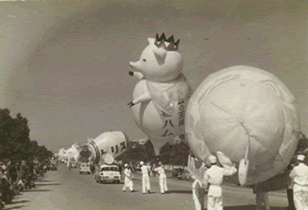A trip to Sapporo
I recommend a trip to Hokkaido at any time, but especially
during the Sapporo Snow Festival. While Sapporo is a fairly big city, it feels
far more laid-back than Tokyo, the streets are wide, and the subway isn’t crowded.
Even during the snow festival, it was easy to get around, and the restaurants
weren’t full. Hokkaido is famous for skiing in winter and in summer it’s a
welcome escape from the humidity of mainland Japan. But most of all, it’s
famous for food! Sapporo is omiyage heaven!
 |
| Sapporo Tokeidai, a clock tower built in the 1870s |
 |
| Down in Susukino, frozen fish display |
 |
| A sushi cake! Chirashi sushi full of Hokkaido specialties |
So what are the meibutsu? Seafood, of course, especially
salmon, sea urchin and crab. All over
Susukino – the downtown part of Sapporo – you’ll find restaurants dedicated to
crab, with giant crab sculptures to advertise their wares. The “tegani” (a
hairy crab) signs are especially creepy.
Curry is popular all over Japan and in Hokkaido, the specialty is "soup curry", a great way to keep
warm. Rice is served separately, so you take a spoonful of rice and dip it into
the curry ‘soup’. It’s not unlike Mulligatawny.
Lamb is also popular in Hokkaido, but it has a bad image in Japan – perhaps
people expect a strong, “mutton” flavour, so it tends to be disguised with lots
of garlic, served Mongolian style as “Genghis Khan”.
 |
| Great packaging for Rakkyo Soup Curry |
 |
| A famous supplier of crab and other seafood |
 |
| Creepily realistic |
I found this delicious salmon, wrapped in wakame seaweed and
steamed, layered to look like sushi, from Rebun Island, one of the
northern-most parts of Japan. It looks like a beautiful place, and I’d love to
visit in summer. In winter, I imagine it’s bitterly cold. You can learn more
about the place and their delicious seafood here:
http://www.rebun.jp/
 |
| Rebun Island salmon |
Corn, potatoes, asparagus, melons, and butter, cream and
chocolate are also famous products of Hokkaido, often combined! So you have
miso flavour ramen with corn and butter, butter-flavour caramels, chocolate
potato chips, chocolate-dipped corn crisps and chocolate beer (of course,
Sapporo Beer is one of THE famous products!)
 |
| Milk caramel and butter caramel |
One famous sweets companies is Royce, home of the most
decadent hot chocolate, perfect for warming up on a cold day. But it's most famous product is chocolate potato chips. The combination of slightly crisp and salty with rich
chocolate actually works.
 |
| Chocolate and potato chips - perfect |
As I mentioned before, Marusei Butter Sand by Rokkatei is
also a very popular take-home gift: rich rum and raisin butter cream,
sandwiched between buttery cookies.
 |
| The logo, incorporating the Marusei kanji and butter in katakana, is beautiful. |
A trip to Otaru, about 30 mins by train, is
really worth it. In winter, the view as the train speeds along the coast through the snow, is gorgeous. Make sure you stick around after sunset, when the canals and
streets are lit with icy lanterns and candles. The town has an unusual,
European feel, with historic buildings and warehouses. In Marchen Square you’ll
find a big Rokkatei store (home of those delicious Butter Sand cookies and a
whole lot of other sweets including freeze-dried strawberries coated in
chocolate), also Kitakaro for cakes and LeTao for cheese cake (anyone who
watches Saturday morning TV in Tokyo will know those commercials, “LeTao,
tabetai!”). LeTao has a nice café upstairs – a good place to kill time and keep
warm waiting for the sun to set.
 |
| Otaru Canal at night |
 |
| The sign, slightly melted, outside LeTao |
Finally, you can’t visit Sapporo without a trip to the
Ishiya factory, home of Shiroi Koibito, made since 1976. “Shiroi Koibito Park”
is set in a kitschy faux Tudor mansion, with an English garden, various
eccentric collections of toys and paraphernalia, and of course, the factory,
which smells amazing. You can watch those perfectly crisp sable biscuits meet
white chocolate, though some crucial processes are hidden. Shiroi Koibito means
“white lover”, a reference, I guess to the perfect ‘marriage’ of white
chocolate and biscuit. Ishiya wasn’t happy when comedy company Yoshimoto Kogyo
released Omoshiroi Koibito – “funny lover” – cookies in 2010. While it’s a
funny idea, I can see why Ishiya complained – the packaging is remarkably
similar.
http://www.shiroikoibitopark.jp/english/
 |
| Inside the factory |
 |
| Shiroi Koibito - you can buy them at Narita Airport, too. |
 |
| Left: original Shiroi Koibito. Right: "Omoshiroi Koibito" |
















































